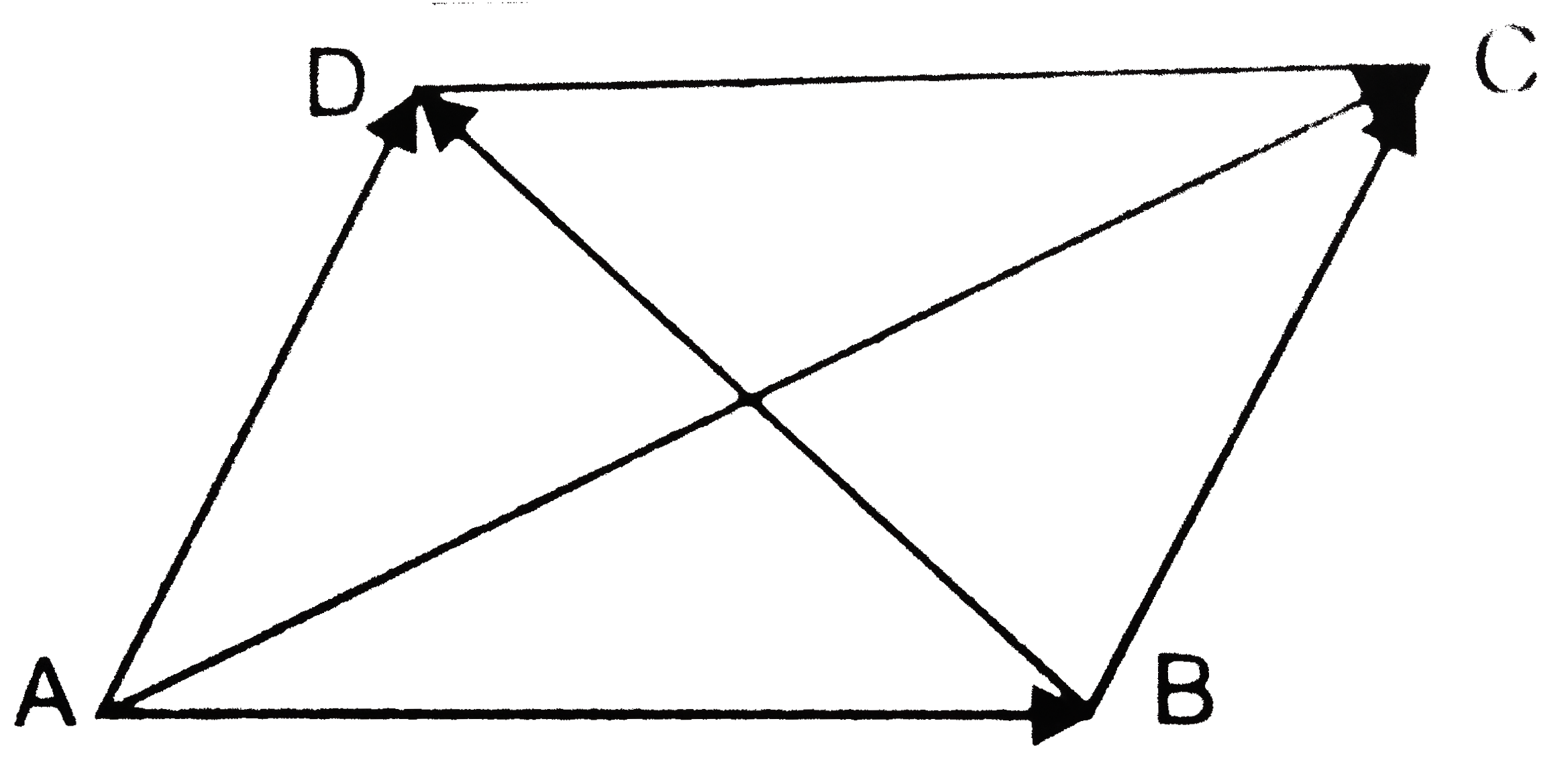ABCD is a parallelogram, with AC, BD as diagonals. Then →AC−→BD=Solution in Kannada
2→AB
3→AB
4→AB
→AB
The correct Answer is:C
Step by step video, text & image solution for ABCD is a parallelogram, with AC, BD as diagonals. Then vec AC - vec BD = by Maths experts to help you in doubts & scoring excellent marks in Class 12 exams.
Topper's Solved these Questions
Similar Questions
The direction cosines of the line making angles 45o,30o and 120o with the coordinate axes are
03:38View SolutionLet ABCD is a parallelogram and →AC,→BD be its diagonal, then →AC+→BD is
04:35View SolutionABCD is a parallelogram Fig. 2 (c ) .64. ACand(BD)areitsdiagonals.Showtˆ<br> (a) vec (AC) +vec (BD) =2 vec (BC)<br>(b)vec (AC) - vec (BD) =2 vec (AB)
 . 02:48View Solution
. 02:48View SolutionA parallelogram ABCD. Prove that −−→AC+−−→BD=2−−→BC'
02:10View SolutionABCD is a parallelogram with AC and BD as diagonals. Then, A→C−B→D=
04:07View SolutionIf ABCD is a parallelogram, then −−→AC−−−→BD=
09:05View SolutionABCD एक समांतर चतुर्भुज है ।AC और BD इसके विकर्ण है । सिद्ध कीजिए -
−−→AC+−−→BD=2−−→BC
−−→AC−−−→BD=2−−→AB.06:41View SolutionABCD एक समान्तर चतुर्भुज हैं और AC, BD इसके विकर्ण हैं|
(a) −−→AB को −−→AC और −−→BD के रूप में व्यक्त करें| (b) −−→AC को −−→BD के रूप में व्यक्त करें|
साथ ही यह सिद्ध करें कि −−→AC+−−→BD=2−−→BC,−−→AC−−−→BD=2−−→AB05:56View SolutionABCD एक समांतर चतुर्भुज है | AC और BD उसके विकर्ण है सिद्ध कीजिए -
−−→AC+−−→BD=2−−→BC07:30View SolutionABCD एक समांतर चतुर्भुज है | AC और BD उसके विकर्ण है सिद्ध कीजिए -
−−→AC−−−→BD=2−−→AB03:30View Solution¯¯¯¯¯¯AC and ¯¯¯¯¯¯BD are the diagonals of the parallelogram ABCD. Prove that,
−−→AC+−−→BD=2−−→BC and −−→AC−−−→BD=2−−→AB04:05View SolutionABCD is a parallelogram and AC, BD are its diagonals. Show that :
−−→AC+−−→BD=2−−→BC,−−→AC−−−→BD=2−−→AB.03:09View SolutionABCD एक समांतर चतुर्भुज है तो सिद्ध करो −−→AC+−−→BD=2−−→BC
05:22View SolutionIf AC and BD are the diagonals of a quadrilateral ABCD, prove that its area is equal to 12∣∣∣−−→AC×−−→BD∣∣∣.
03:47View Solution−−→ACand−−→BD are the diagonals of a parallelogram ABCD. Prove that
(i)−−→AC+−−→BD−2−−→BC
(ii) −−→AC−−−→BD−2−−→AB04:03View Solution

